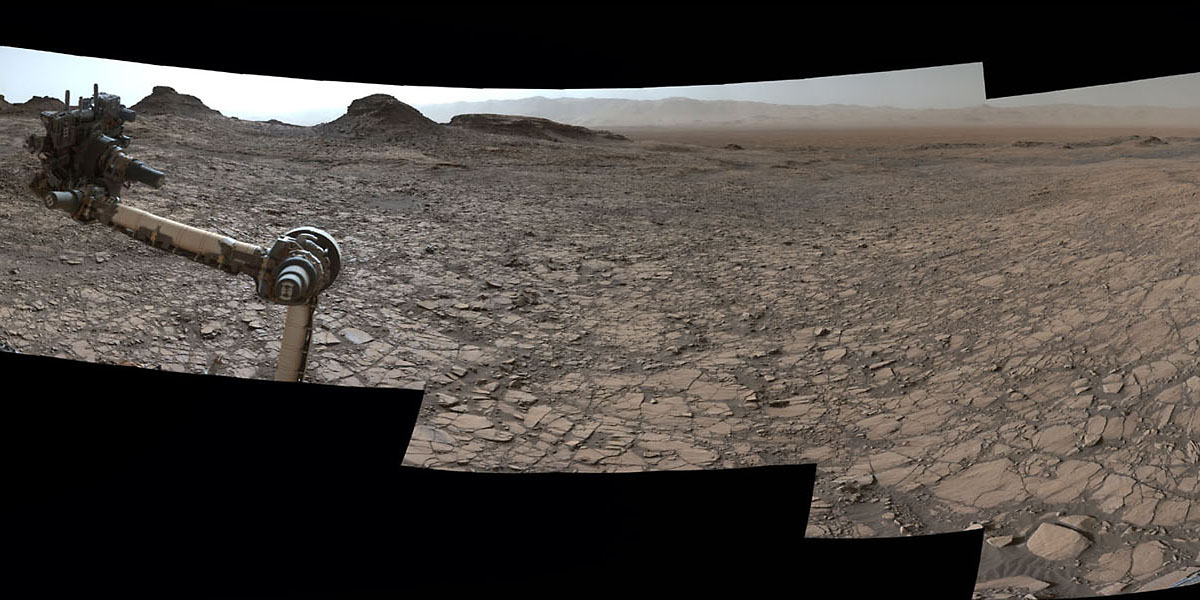Written by Guy Webster
NASA’s Jet Propulsion Laboratory
 Pasadena, CA – Eroded mesas and buttes reminiscent of the U.S. Southwest shape part of the horizon in the latest 360-degree color panorama from NASA’s Curiosity Mars rover.
Pasadena, CA – Eroded mesas and buttes reminiscent of the U.S. Southwest shape part of the horizon in the latest 360-degree color panorama from NASA’s Curiosity Mars rover.
The rover used its Mast Camera (Mastcam) to capture dozens of component images of this scene on August 5th, 2016, four years after Curiosity’s landing inside Gale Crater.
The visual drama of Murray Buttes along Curiosity’s planned route up lower Mount Sharp was anticipated when the site was informally named nearly three years ago to honor Caltech planetary scientist Bruce Murray (1931-2013), a former director of NASA’s Jet Propulsion Laboratory, Pasadena, California. JPL manages the Curiosity mission for NASA.

This helps preserve these monumental remnants of a layer that formerly more fully covered the underlying layer that the rover is now driving on.
Early in its mission on Mars, Curiosity accomplished its main goal when it found and examined an ancient habitable environment. In an extended mission, the rover is examining successively younger layers as it climbs the lower part of Mount Sharp.
A key goal is to learn how freshwater lake conditions, which would have been favorable for microbes billions of years ago if Mars has ever had life, evolved into harsher, arid conditions much less suited to supporting life. The mission is also monitoring the modern environment of Mars.
[youtube]https://www.youtube.com/watch?v=UUweNrpFTwA[/youtube]
These findings have been addressing high-priority goals for planetary science and further aid NASA’s preparations for a human mission to the Red Planet.
For more information about Curiosity, visit:



